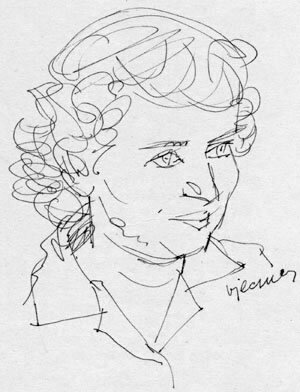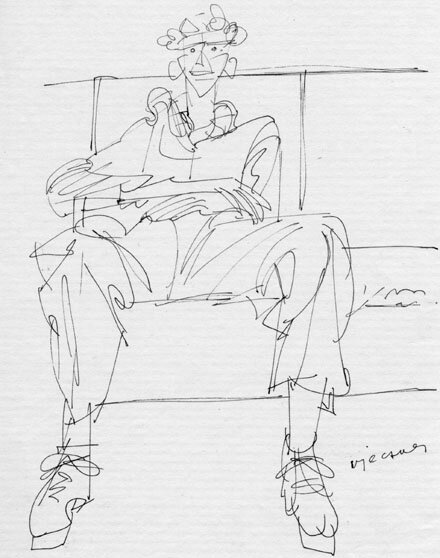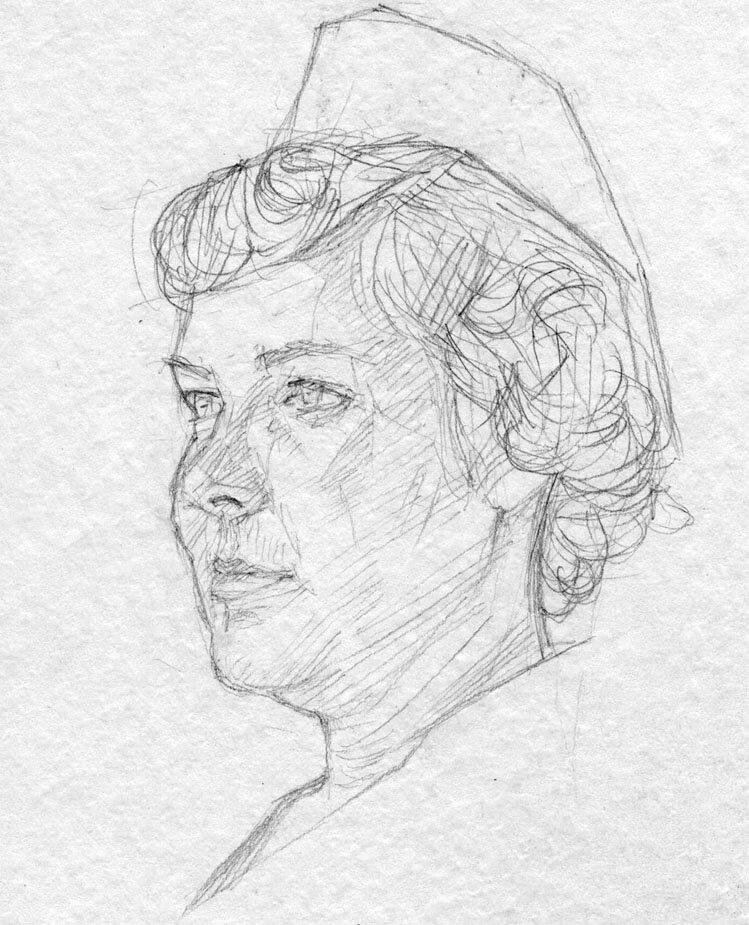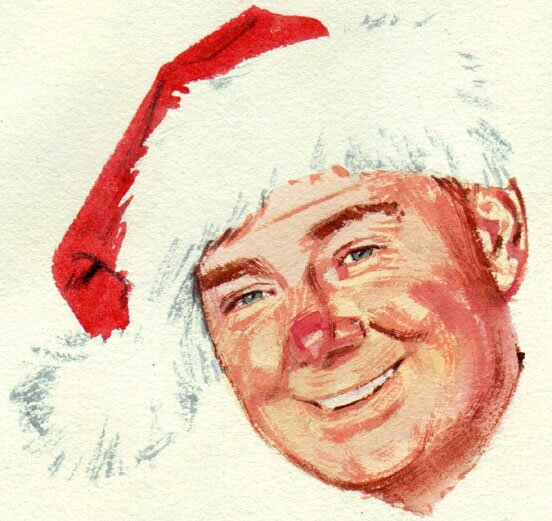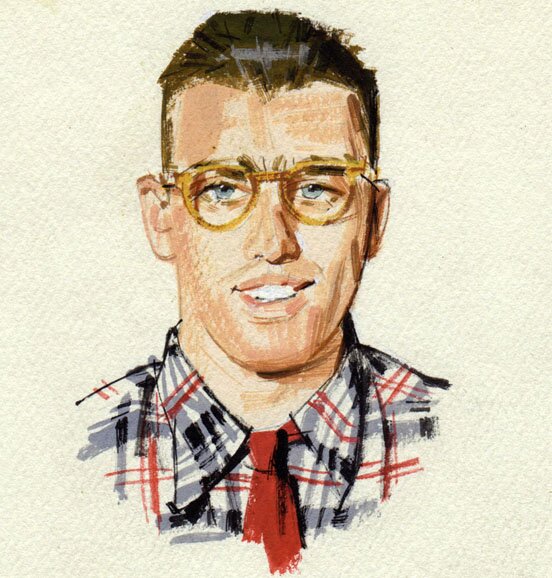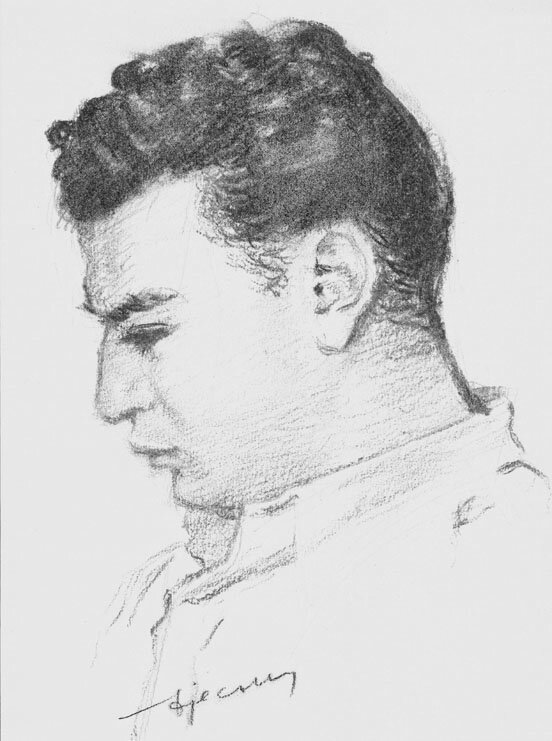
One of the cousins, Lester Wyetzner, I newly met, who was a couple of years younger than I. His last name derives from mine and was adopted by all of my father's brothers (three of them, including this cousin's father) who came to America. They expected me to do the same, but I preferred keeping my name. For some reason that I don't quite see they resented that.
The cousin died in an auto accident when still very young, I think in his thirties, which was a terrible blow to his quite doting mother.
The drawing was done with charcoal pencil.
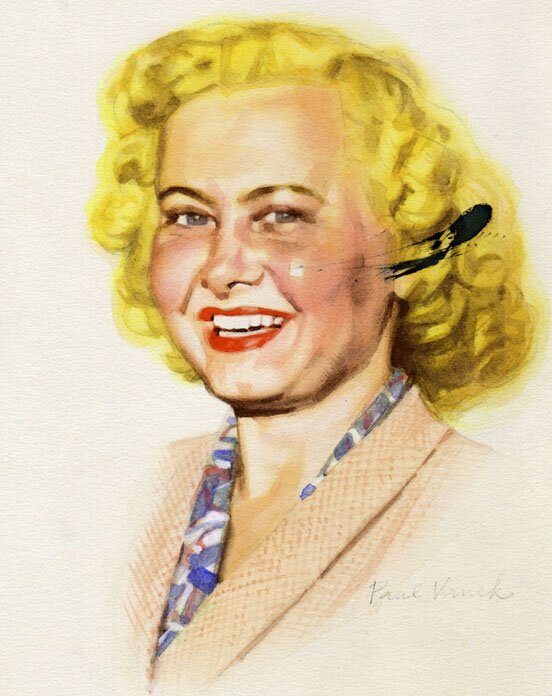
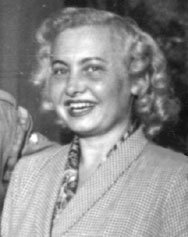
After arriving in the U.S., one thought I had about trying to make a living was to draw, or paint, portraits from people's photographs, something I was especially accustomed to from my wartime captivity noted. The above snapshot was of a person I knew in Europe, and I painted the color portrait in watercolor (tempera), a technique I had developed to a high polish, as shown elsewhere here. The smudge happened later, and I felt it would not be authentic to try to remove it.
Somebody in a shop on Fifth Avenue agreed to put these two pictures in the window, with some sales message, but I don't recall any order. I used a simplified last name, "Vanek", which I later tried to erase, unsuccessfully as can be seen.
